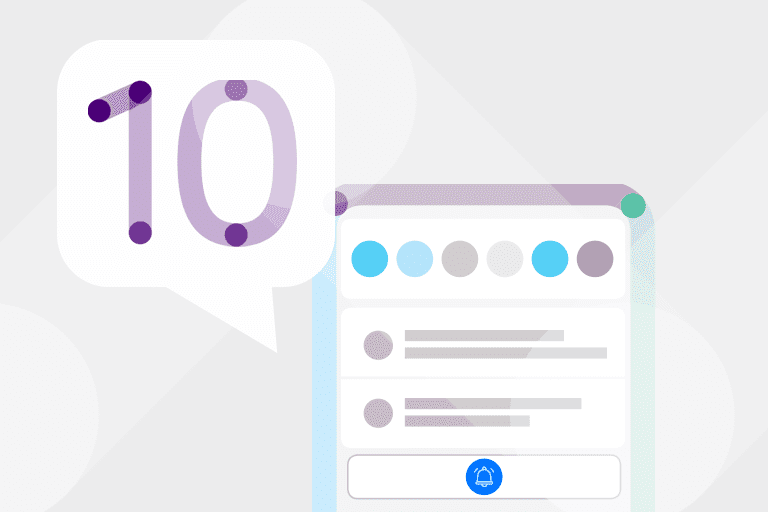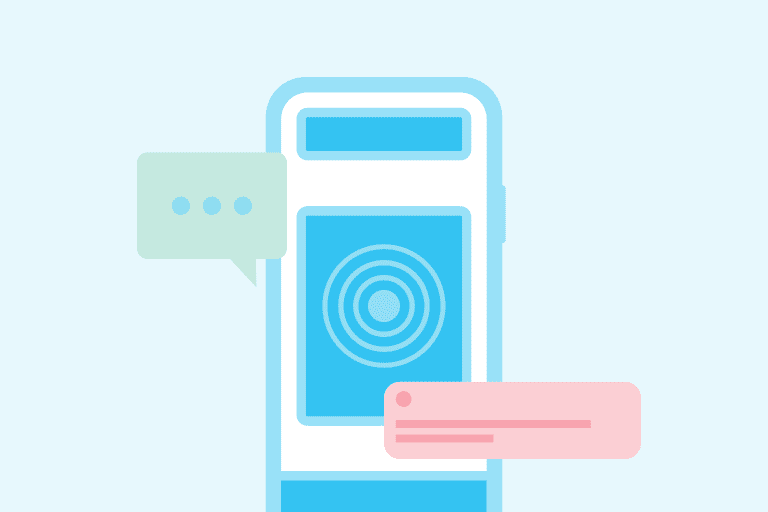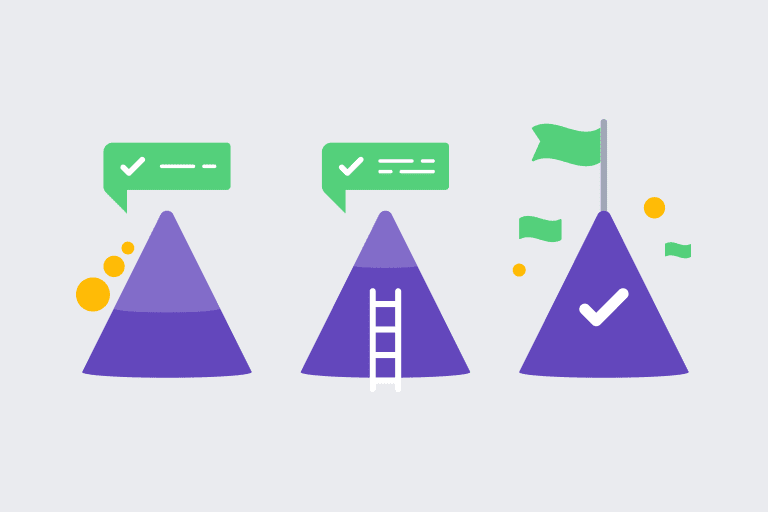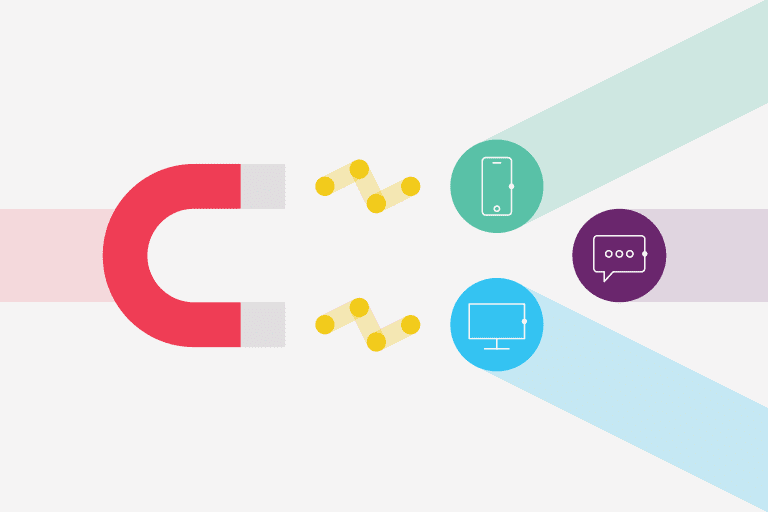

Top 10 Mobile Marketing Campaigns Every Brand Needs
Your go-to guide to crafting better mobile marketing campaigns for every lifecycle stage: activation, nurture and reactivation.
Top 10 Mobile Marketing Campaigns Every Brand Needs
Your go-to guide to crafting better mobile marketing campaigns for every lifecycle stage: activation, nurture and reactivation.


The Must-Haves of Mobile Marketing
A fundamental rule of marketing has always been to meet customers where they are. That expectation has only increased today, with 96% of Americans owning a mobile phone, and the average consumer spending over 5 hours per day on it.
Marketing technology has evolved with the times, and it’s never been easier to give your marketing a mobile-friendly makeover. But with this alternative medium comes alternative behaviors and expectations—and it’s critical that brands adjust in kind.
This guide will walk you through how to create successful mobile marketing campaigns, from start to fini—well, there is no marketing finish line, but there are distinct phases in each customer’s journey with your brand.
Here’s how to maximize your opportunities at each phase to achieve the four key pillars of customer loyalty: familiarity, appreciation, engagement and trust.
While mobile marketing is a necessity for brands looking to connect with today’s customers, that doesn’t mean email marketing is any less valuable. Check out our 10 Lifecycle Email Campaigns Every Brand Needs for marketing best practices at every phase of customer engagement.
The three phases of the customer lifecycle
- Activation Initial stage of the lifecycle where companies seek to activate consumer attention and interest
- Nurture Ongoing lifecycle stage where companies nurture and engage consumers to strengthen relationships
- Reactivation Re-engagement stage of the lifecycle where companies reactivate customer engagement to drive retention and loyalty
First Phase: Activation
This is the part where you grab your audience’s attention and keep it long enough so they get to know you, your brand and what you can offer them. And the best way to do that is to start at the beginning.
1. Welcome Campaigns: The First Impression
Your first interaction with a potential customer—whether it be through a mobile phone or any other touchpoint is more than just an introduction to your brand. It’s your first, and biggest, chance to turn a connection into a relationship.
Essential Ingredients
-
Design with a cross-channel mindset
It’s the marketing golden rule: greet customers the way they want to be greeted. Did someone just become a registered mobile app user? They should receive an immediate in-app welcome message, which your accompanying welcome campaign assets (e.g., email, landing page, direct mail welcome package) should complement.
-
Reduce friction with mobile deep linking
Up to 70% of web traffic comes from mobile devices, and 77% of smartphone consumers report that they are more likely to buy when mobile sites or apps make that process easy. These stats highlight the need for mobile deep linking, in which links to content or product on mobile devices redirect to open in a mobile app rather than mobile web browser. This not only creates a more seamless brand experience, but can also provide better tracking and higher conversions.
Once you’ve got their attention, you have a very limited amount of time to keep it. Maintain your momentum by implementing a strong onboarding series.
2. Onboarding Series: Have (and Keep) Them at “Hello”
Your welcome campaign is just the start. To solidify brand engagement, grow customer loyalty, and prompt first or repeat purchases, you need to follow this up with an onboarding series.
As with email marketing, each message of your mobile onboarding campaign should have a specific objective, whether that’s in-app purchases, following your brand’s social media channels or completing a profile.
Essential Ingredients
-
Orient newcomers
The broader your array of products and services, the more guidance your newcomers will need. Give your series the space it needs to inform and connect with your audience, while keeping in mind the behavior of people on mobile phones.
-
Build cross-channel connections
An omni-channel subscriber is a valuable customer because if you lose their connection on one channel, the other channels will maintain the relationship. But watch out for data silos: We’ve found that mobile data is not being incorporated into email campaigns and vice versa. For example, despite a consumer having downloaded an app, 23% of companies studied still included a “download the app” call-to-action in their email campaigns.
-
Enable behavioral profiling
Use customer behavior to guide your sending and targeting decisions. This is called “behavioral profiling,” and can include who downloads your app and what they navigate to once they’re there, the social channels they engage with, and more.
Onboarding: Sequences for Success
-
Option A: Editorial Cadence
Structure your series based on the content itself so there is an editorial flow. This is a particularly good strategy for brands that are more complex and have a lot to communicate.
-
Option B: Training/Usage Cadence
Walk new users through the steps of getting started, understanding product features, and how to get help.
-
Option C: Essential Ingredients Cadence
Front-load your series with messages serving your most important goals—and be sure to wrap up with a high-value offer to entice that first or repeat purchase.
You’re probably already brainstorming new activation campaigns that max- imize this advice—but the process of turning new clients into brand loyalists is just getting started. The next phase, “Nurture,” is where you have the opportu- nity to strengthen and deepen your relationships with your customers.
Second Phase: Nurture
Now that you’ve used mobile marketing to engage with and activate a customer, you need to consistently engage that customer to strengthen your relationship.
These campaigns can range from business-as-usual promotions and newsletters to behavior-based messages, but we’re going to focus on specific moments during this stage of the customer lifecycle: milestones, surveys, referrals and emergencies.
3. Customer Milestones: A 21st-Century Approach
It’s time to move beyond only paying attention to your customers’ birthdays and anniversaries. For today’s brands to get a desirable ROI, you have to understand the basics of how individuals form their identity—and be ready to take advantage of that data.
Essential Ingredients
-
Mobile push notifications
Milestones don’t always require an email—sometimes a short mobile push message is all it takes to celebrate them, and to make them feel good about your brand.
-
Text messaging (SMS)
It’s important to remember what a milestone can encompass—it isn’t all about birthdays and loyalty rewards. This is especially true for non-profits and municipalities. For example, the City of San Francisco used the 30th anniversary of the 1989 Loma Prieta earthquake to send a test SMS emergency alert, with a link on how to prepare for earthquakes.
-
In-app messages
Use your mobile app to send customers celebratory messages for their milestones while they are in the app, which will reinforce their behavior to open and navigate future sessions.
The psychology is clear: The most effective milestones are the ones that affirm a customer’s identity. To discover everything there is to learn about that identity, your best option is to go to the source.
4. Surveys & Feedback: The Voice of the Customer (and How to Hear It)
Consumers are inundated by various brand surveys these days, so it’s more critical than ever to stand out—and to get those consumers to take time out of their days to share their feedback.
The key to continuing to receive feedback from customers is to take action with the data you collect.
Essential Ingredients
-
Something to measure
The two most common ways to measure how your consumers are feeling are:
Net Promoter Score (NPS) – Measures the likelihood a customer will recommend your brand, on a scale of 1-100
- Promoters (90-100): loyal and enthusiastic fans
- Passives (60-89): satisfied, but not necessarily loyal, customers
- Detractors (1-59): unhappy customers, and loudly so
Likert Scales – Asks respondents to rank their level of agreement on a series of statements provided by your brand
-
Text messaging (SMS)
For service-based businesses, sending customers surveys along with other reminders and updates via SMS is a no-brainer. Because SMS has strict character limits, it helps keep your request for feedback short and sweet.
-
In-app messages
When a customer is already in your app, it’s easy to hit them with a brief survey, typically just one or two questions that have a numerical or multiple choice answer—some format that easily ties into NPS and/or Likert analysis. You want this interaction to go quickly so they don’t feel frustrated (odds are they didn’t open your app to take a survey).
Now that you’ve gotten to know your customer and what connects them to your brand, it’s time to turn their engagement to the next level: advocacy.
5. Referrals & Advocacy: Your Street Team
Advocacy is when your best customers recommend and refer your brand to new prospective customers (typically their family and friends, but also includes anyone reading one of their reviews or comments).
Essential Ingredients
-
Build your referral program within your app
A Google report showed that 90% of customers will recommend your brand if they’ve had a positive experience with that brand’s mobile app. Following similar logic as mobile surveys, you want to disrupt your customer’s experience on your app as little as possible. Integrating referral capabilities keeps your users where you want them: engaging with your app.
-
Know what motivates action
A good incentive (i.e., a reward) will motivate existing customers while also casting them in a positive light by granting an often- more-lucrative incentive to the new customers they refer you to.
-
Make it easy for them to refer
The design and messaging should make it easy for the customer to understand what your referral program entails, and how to actually make said referral. Keep the call-to-action equally concise and clear.
We’ve talked about how to turn customer attention to loyalty and advocacy—the stuff of marketers’ dreams! But what happens when something goes wrong? Read on to discover how to utilize mobile marketing to communicate to your customers during times of crisis.
6. Emergency & Crisis: Keep Calm and Market On
Emergencies and crises are, generally, not a great thing for your brand. But they are also an opportunity: to offer new products and services; to rethink operational procedures; and to remind past, present and future customers why they should trust your brand with their business.
While B2C brands are still primarily using email to communicate with their customers during an emergency or a crisis, government and nonprofit agencies are more likely to utilize cross-channel platforms.
Why? Because the messages require immediate action, and not every recipient checks their email inbox 24/7. So whether your brand utilizes text messaging (SMS), mobile push notifications or social media, keep three of the following principles in mind: character limits, the value of updates and strong calls-to-action.
Essential Ingredients
-
Know your character limits
Most phone carriers limit SMS to 160 characters. But for emergency communications programs like Wireless Emergency Alert (WEA), the maximum number is 90 characters. Adhering to these limits will help ensure that your message isn’t truncated by different providers’ own limits and/or sent in multiple texts. These limits also mean that your entire message can be viewed from a mobile or tablet lock screen.
-
You can always send an update
Relying on updates not only keeps your audience apprised of the latest news, but can help keep your messages concise. That said, utilizing multiple SMS can be cost-prohibitive, which is where social media platforms like Twitter can be used to your advantage.
-
Have a strong call-to-action
If you’re presenting your audience with details or updates about an emergency, all communication needs to answer their first question: What should I do? This is true even when your brand isn’t impacted by or responsible for the crisis in question, such as when a company wants to help bring attention and support to a social cause; be sure to direct your audience to the action you want them to take (donating, following, subscribing, etc.).
Speak the same language
Emergency: Any incident, whether natural, technological, or human-caused, that requires responsive action to protect life or property (e.g., natural disasters, oil spills, a plane crash).
Crisis: Anything that could negatively influence your business’s reputation or bottom line (e.g., product recalls, PR snafu, a government investigation).
It bears repeating: it’s more cost-effective to retain customers than acquire new ones. Once you’ve put in the work to gain a customer, make that work pay off with engaging reactivation campaigns.
Third Phase: Reactivation
7. Upsell & Cross-Sell: Maximize Your Brand’s Potential
While you can (and should) add upsell and cross-sell opportunities to marketing assets like product pages and checkout flows, you can (and should) also incorporate them into your cross-channel messaging experience.
Essential Ingredients
-
In-app messaging
This is a great way to interact on a more personal level with a customer—especially if a Mobile Inbox is activated. These messages should be personalized and relevant to the customer’s urgent situation, and clearly suggest what they should do next.
-
Mobile push notifications
If your brand has a mobile shopping app, you can personalize a push notification based on a customer’s past shopping history. This ensures the message is not only relevant, but reinforces the value of your app. Even without going into such personalization efforts, push notifications can get customers’ attention when you need it, and can bring them back into your app.
-
Social retargeting
Depending on how your customers engage with your brand, it might make sense to invest in upsells and cross-sells using social retargeting—especially if you have a user’s browsing and purchase history.
Speak the same language
An upsell is when you prompt or entice customers into buying a similar, but higher-end product than the one they’re currently using or considering.
A cross-sell is when you encourage customers to buy complementary or related items to a product they’ve purchased or downloaded.
Upselling and cross-selling are effective because they meet consumers where they are, and mirrors online shopping behavior they’re already comfortable with. Being mindful of your customers’ online shopping behavior is critical to your success—especially when customers don’t buy from you right away (most don’t).
8. Abandonment Campaigns: Don’t Let Your Customers Forget About You
It’s a painful truth that over 70% of online shoppers abandon their carts at checkout—and that number is only growing.
And it isn’t just carts that shoppers can virtually walk away from: browsing, filling out forms, page bouncing and social media engagement can all be abandoned by your customer…
…but you can also get them back.
Essential Ingredients
-
Enable push notifications
When brands send push notifications, app usage increases. The gold standard of app retention is 11 unique opens, and for those who opt-in to push notifications, 46% reach that 11-visit benchmark compared to only 25% who don’t opt-in.
-
Make your mobile checkout easy
Abandonment can happen for any number of reasons, but you want to ensure that those reasons aren’t because of your brand or tech. Studies show that improved checkout design can increase conversion by 35%. Ways to improve include shortening the checkout process, enabling product ratings/reviews, offering multiple payment methods, creating free shipping thresholds, and clearly stating your return policy.
-
Keep their shopping total comprehensive
High costs and fees are the #1 reason for abandonment—in fact, 23% of cart abandonment happens because a customer was surprised by the final total amount. Make sure your app or mobile site is accurately displaying the total cost to the customer throughout the buying process.
53% of mobile website visits are abandoned if that mobile site takes longer than 3 seconds to load
3/10 Nearly 3 out of 10 apps are uninstalled within 30 days of first installing the app
Abandonment campaigns can reel customers back in for a purchase, but doesn’t address the long game of maintaining customer loyalty. That’s where re- engagement campaigns come in…
9. Reactivation & Re-Engagement: The Second (or Third, or Fourth) Chance
Only about 3% of most people are ready to buy “right now.” But further research has shown that 6-7% of your customers are “open to the idea of buying.” You can take advantage of that with reactivation campaigns, reminding inactive subscribers on your list of your brand and, hopefully, persuading them to take action.
Essential Ingredients
-
In-app messages
Research has shown that user retention increased 4x for apps that send in-app messages, alongside 30% more app launches. This can help propel casual users to loyalists.
-
Push notifications
Similarly, customer retention rate is higher for apps that utilize push notifications—they can increase app engagement by 88%. Now that you know all about abandonment, keep that in mind as you devise a push notification strategy: find the time of day your customers are most engaged and prioritize that window, so they are most likely to be ready to act on a push notification when they get it.
-
Personalization for the win
Customizing your app to the customer and their behaviors is a great way to keep them coming back. You can implement static personalization (information that won’t change, such as including their name in an in-app message) and dynamic personalization (based on in-app behavior, such as purchase history). The more you know about your customer, the easier it will be to tailor an app experience to them.
-
Gamification as a not-so-secret weapon
Mobile game apps are unique in their retention the average gaming app retains 36% of its customers after week one, much higher than any other app category. Non-gaming brands can use this to their advantage by bringing in game-like features to the app, such as gaining points based on user behavior as a way to incentivize engagement (an actual reward at the end doesn’t hurt, either).
You’ve been on an incredible journey with your customer: you piqued their interest, kept them engaged enough to interact, weathered a PR nightmare of some stripe, and have brought customers back to your brand. What’s next?
10. Loyalty: The End Goal
While it’s true that marketing never really stops, it’s also true that when it comes to building brand advocacy, loyalty is the end goal. And once you achieve deep loyalty from a customer, it requires a different level of thinking and messaging to keep them there.
Essential Ingredients
-
Text messages (SMS)
SMS is a rather intimate communication channel, so it’s best to start an SMS campaign with your most loyal, engaged customers as you figure out what works best for your audience. They’ll feel like they’re getting white-glove service, and you’ll learn more about what they need.
-
Push notifications
Push notifications help keep your customer in-the-know with your brand, and you can incentivize opting into these notifications by offering a reward or first dibs on a new product. Remember, 68% of people with smartphones or tablets enable push notifications— take advantage of that.
-
In-app messages
Because in-app messages are only seen, um, in the app, it’s important to adjust your message accordingly. You’ve already got them, so don’t hit them with the same message that brought them (e.g., a Facebook ad, email or push notification). By keeping these messages unique, you’ll also reinforce the customer’s need (or at least curiosity) to launch the app.
-
Rewards help
Offering rewards to loyal customers is a win for all segments, whether that’s your most fierce brand advocates or a newly active user. And though powerful, a dedicated loyalty program is not the only way to reward customers—they can achieve benefits and discounts by reaching a certain spending threshold or other brand-specific milestone.
Now that you have the best practices for these ten mobile marketing campaigns, how are you going to put this knowledge into practice?



































